The lagoon of Venice is a rare beauty set in the splendid setting of the Veneto region, and represents a particularly precious and distinctive area of Italy, not only from a historical point of view, but also from an environmental point of view. Its ecological characteristics, in fact, make the area suitable for hosting numerous species of flora and fauna, which contribute to making the landscape unique.
The body of water that surrounds Venice and its islands extends over a vast area, bringing with it a strong identity, rooted in deep centuries-old traditions, all to be discovered.
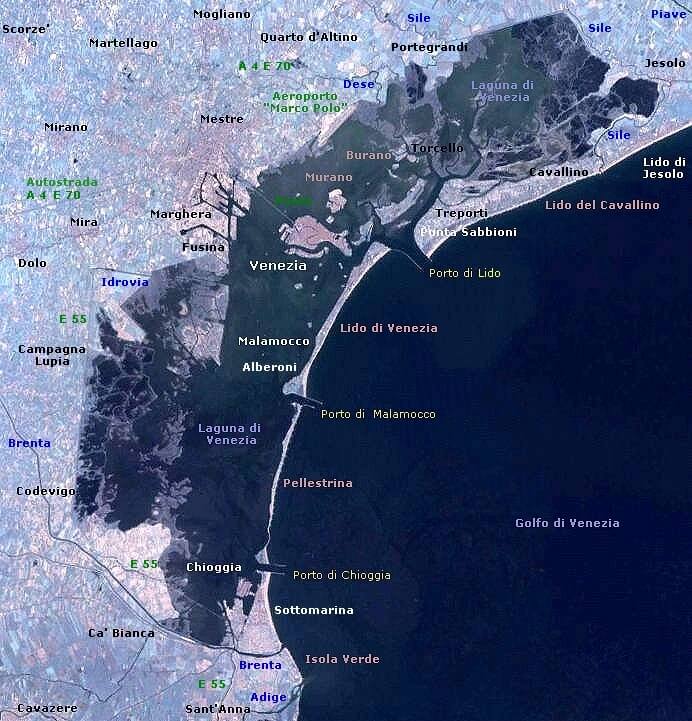
Origins and formation
The Venetian lagoon was formed about 6,000 years ago, at the end of the last ice age, when rising sea levels began to submerge the Adriatic coastal plains. This process has given rise to a unique environment: a wide expanse of water protected by strips of sand called lidos, which separate the open sea from the lagoon, protecting it. The rivers that flow into the lagoon, on the other hand, have contributed to bringing sediments that have formed the various islands on which Venice stands today.
A constantly evolving environment that, due to dynamic natural processes and human intervention, has created a rich and complex ecosystem, making the lagoon a characteristic and vital element for the identity of the Veneto region.
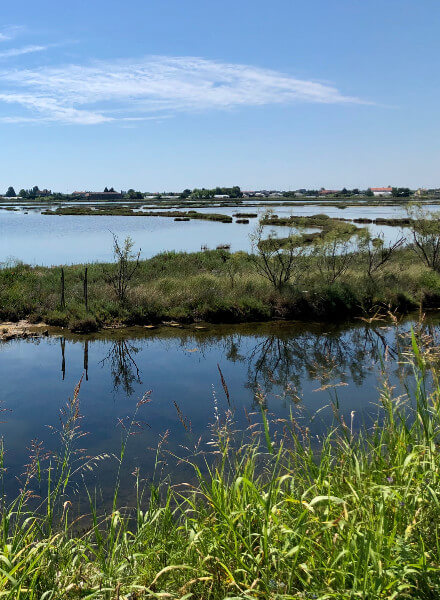
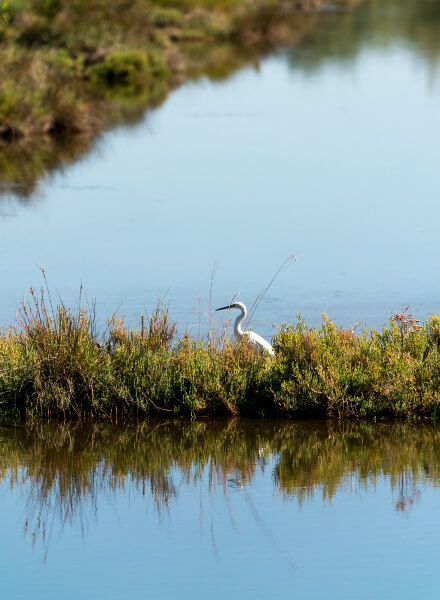
The lagoon: fragile and rich in biodiversity to be protected
The lagoon is an ecosystem that is as unique as it is fragile; it is in fact one of the largest wetlands in the Mediterranean, characterized by a rich biodiversity that requires careful and continuous protection.
The Barena and the Ghebi
Among the most important and characteristic elements of this ecosystem are the salt marshes, low islands formed by mud, sand and organic sediments that partially or completely emerge during low tides. These formations are crucial for the ecological health of the lagoon as they support a wide variety of life cycles; in fact, they offer nesting habitats for multiple species of birds – such as the pink flamingo and the avocet – and feeding areas for fish and molluscs. Plants such as glasswort and spartina marittima also grow on the salt marshes, capable of resisting shallow waters and the saline environment, which contribute significantly to stabilizing the sediments.
The salt marshes are also characterized by the presence of natural channels called „Ghebi„, which facilitate the flow of water and water circulation in the lagoon: during high tides, the ghebi have a drainage function, while at low tides they allow the passage of water even in the most inland areas. These channels are therefore vital to the ecosystem, as they help maintain salt balance and distribute essential nutrients for the local flora and fauna.
Unfortunately, climate change, rising sea levels and decreasing sediment deposits from the sea and rivers are threatening the delicate balance of these places with potentially devastating impacts on the biodiversity of the lagoon and the protection of coastal areas. The conservation of salt marshes is therefore of fundamental importance for the ecological health and environmental sustainability of the Venice lagoon and its communities.
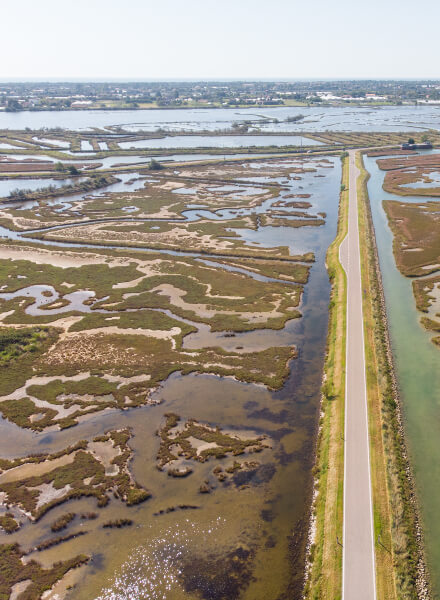
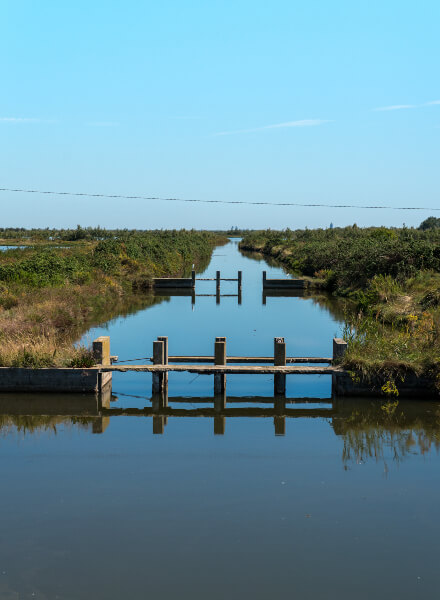
The „Tegnue”
The „Tegnue„, underwater rock formations typical of the Adriatic Sea, characterize the stretch of sea in front of the gulf and the lagoon of Venice. These natural structures, similar to coral reefs, form real islets of marine biodiversity; rich in a variety of life forms, the Tegnue offer shelter and nourishment to numerous marine species, from small invertebrates to fish, making them essential for the health of the lagoon ecosystem.
Their extraordinary biodiversity makes them a site of scientific interest and a prime destination for scuba diving enthusiasts, who can explore a vibrant and colorful underwater world.
The islands of the Venice lagoon
In addition to the majestic Venice, among the waters of the lagoon there are unique treasures that contribute to making this area one of the most special and well-known in the world. The Venice lagoon is in fact a unique archipelago, which includes islands steeped in beauty and history, ancient crafts and traditions.
Among the most particular we find:
- Murano, the island of Glass
Murano is famous for its centuries-old tradition in glassmaking, which originated in 1291 when an edict of the Serenissima imposed the relocation of furnaces to the island as a measure to protect Venice from fires. The wisdom and elaborate techniques used by Murano master glassmakers attract visitors from all over the world, interested in discovering the secrets of this ancient craft.
- Burano, the island of Lace and Colors
On the other hand, the island of Burano is renowned for its lively colorful houses and for the art of lace, which reflects a craft tradition of great refinement and beauty, still alive today.
- The island of Torcello, at the origins of Venice
Torcello, with its tranquil atmosphere, is considered the place where Venice originated. A fascinating island that encloses history and mystery with ancient monuments, including the Basilica of S. Maria Assunta, founded in 639 and a splendid example of Venetian-Byzantine style, with precious mosaics inside.
- The island of Sant’Erasmo, the vegetable garden of Venice
Known as the vegetable garden of Venice, the island of Sant’Erasmo is characterized by extensive crops that have been feeding the city for centuries with fresh, native and quality products. The island is famous for the production of a particular variety of artichoke with a typical purplish color, fleshy and tender, known by the nickname of „violet of Sant’Erasmo”, used in typical recipes and so valuable that it has become a Slow Food presidium.
- Island of San Francesco del Deserto
San Francesco del Deserto offers a unique spiritual refuge, immersed in the tranquility and history of the Franciscan friars, who still live there today.
- The island of Pellestrina
With its fishing traditions and its historic communities, Pellestrina is a hidden jewel that preserves a lagoon lifestyle to be discovered, to immerse yourself at 360° in the history of the Venetian lagoon.
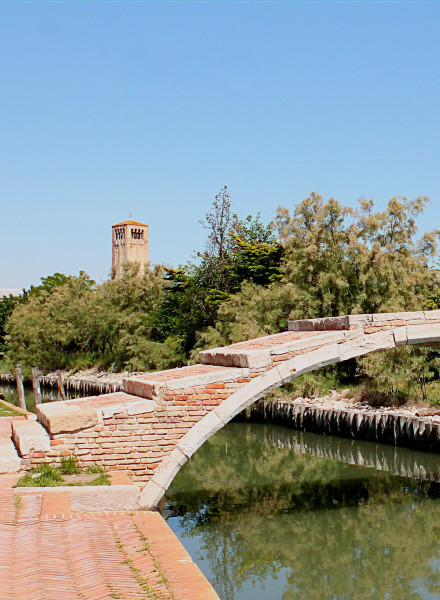
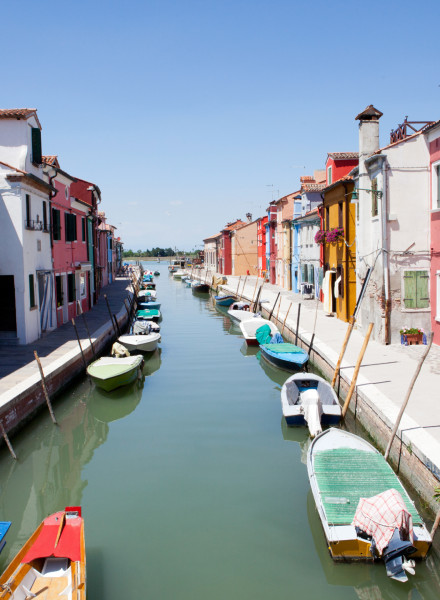
Cavallino Treporti, the lagoon and the cycle path of Via Pordelio
The coastline of Cavallino Treporti, which stretches for about 15 km between the sea and the lagoon, offers cycling enthusiasts an extensive network of cycle paths, ideal for exploring nature and local culture in a sustainable way. The Via Pordelio track, in particular, is renowned for its panoramic views of the lagoon, where canals and sandbanks lead to more isolated and naturalistic areas.
Our campsite on the Venice lagoon
Located in a strategic point to explore the Venice lagoon and its spectacular islands, Camping Ca’Savio offers a perfect holiday experience for families, groups of friends and anyone who wants to combine comfort with the discovery of authentic natural environments.
Book your next adventure now and immerse yourself in the beauty of the lagoon!